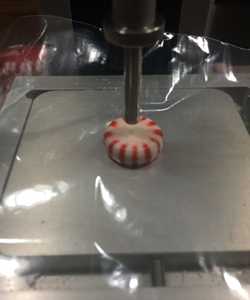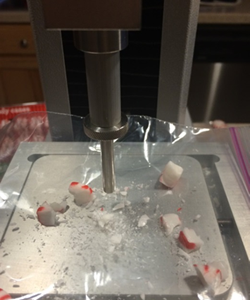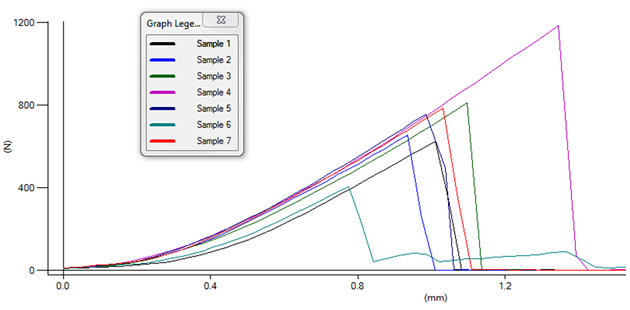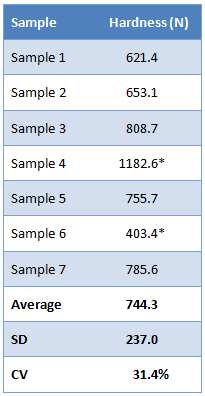Texture Analysis SolutionsPeppermint Candy Hardness
Highlights
- Objective measurement of physical properties of a so-called hard peppermint candy sweet
- Repeatable and accurate formulation hardness test method using a software-controlled texture analyzer
- Precision compression probe fixture to apply compressive crush loading until the point of fracture
- Quantified hardness and fracturability texture correlated to consumer-expected brittleness of a fresh product
Situation

If you want to know the hardness of a peppermint candy, you can drop it from a given height onto a hard surface, and observe if and how it breaks. There is a better way though—and one in which you can provide objective measurement through repeatable mechanical testing. Using a computer-controlled texture analyzer, the hardness of a peppermint candy can be precisely measured, and by testing good samples, standard comparison data can be established for quality testing.
Method

The test example shown here used a TMS-Pro Food Texture Analyzer fitted with a 2.5 kN (550 lbf) intelligent loadcell and 6 mm cylinder probe. The control program advanced the probe to touch the mint sample before progressing down a further 2 mm at 50 mm/min., a distance found to be enough to fracture the sample. The sample was held in a plastic bag simply to contain the fragments without interfering with the forces involved in the test. These peppermints failed somewhat catastrophically!
The TL-Pro software then automatically calculated the breaking force, and displayed graphically the traces of the test.
Results
 The graphical representation from TL-Pro, of the test results for the four samples, is shown here (force applied, against cumulative displacement).
The graphical representation from TL-Pro, of the test results for the four samples, is shown here (force applied, against cumulative displacement).
Samples 4 and 6 appear to be outliers, one being excessively hard, the other fracturing too easily. The other samples are clustered in the middle, and can be used to provide standard comparison data for preferred hardness.
The same results with additional calculations are shown here.

*most likely outliers
- Average = arithmetic mean
- SD = standard deviation
- CV = coefficient of variation: (SD/Mean) x 100
Significance
The hardness of this product can be somewhat variable, if these results are representative. When the two outlying results (samples 4 and 6) are removed, the average breaking force reduces slightly to 724.9 N and the standard deviation reduces significantly to 83.0. This puts the coefficient of variation (CV) at 8.73, much closer the acceptable level of 10%. A greater number of samples may be likely to produce results in this range with proportionally fewer outliers. When dealing with variation such as this, it is important to understand that not all test replications are going to produce ideal results. As with all food products, there will always be a degree of variation. The purpose of objective testing such as this, is to establish what is acceptable variation, as a measure of quality.
